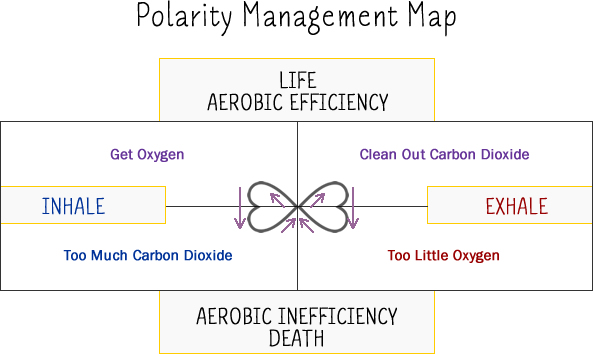Managing Problems vs. Solving Problems
Baby I will wait for youIf you think I'm fine it just ain't true I really need you in my life No matter what I have to do I'll wait for you
What will it take to make you come back Girl I told you what it is and it just ain't like that Why can't you look at me You're still in love with me Don't leave me crying -Elliott Yamin, “Wait For You”
In general, romantic love has been poorly represented in an overwhelming number of pop love songs. Too often, as in Yamin’s lyrics above, the song is really about codependency rather than a healthy desire to be in a relationship. Now, I can certainly relate to the feelings of overwhelming depression and hopelessness after breaking up with someone, but all of this gets me thinking, of course, about the nature of vulnerability and independence. How can we maintain our independence without being emotionally avoidant? How can we be vulnerable without being codependent upon the praise and love of another? Well, I don’t know for sure, but I’m going to take a stab at it.
I’m going to answer these questions using an approach called “Polarity Management” and it comes from management consultant Barry Johnson. The fundamental question of polarity management is this: “Is this a problem to solve or a problem to manage?”
Johnson argues that 95% of the problems we are asked to solve in our formal education are problems with a single correct answer (i.e. “Who was the first president of the United States?”) or with multiple independent answers (i.e. “How do you get to the top of the mountain?”). He adds that it is critically important to gain this type of knowledge, but this type of problem identification and problem solving only applies to a subset of the issues we face.
“Polarities,” on the other hand, have two or more right answers that are interdependent. For example, when we teach our children to share, we are teaching them how to manage a polarity. The process of sharing is a polarity issue because it involves two interdependent, right answers to the problem: “In my relationship with this childhood friend, should I be concerned about her, or should I be concerned about myself? If I just take care of her and neglect myself, it won’t be a very satisfactory relationship. If I just take care of myself and neglect her, it won’t be a very satisfactory relationship." Sharing is a response to a polarity. In a relationship, we need to pay attention to our own needs and we need to pay attention to the other’s needs (as a point of clarification, this article deals only with how an individual might perceive or behave in a relationship—not with the relationship itself).
Because virtually all of our “problems” in formal education have one right answer, we automatically shift into that way of thinking when a “problem” occurs in our relationships. When we use our problem solving skills to address a polarity—and this is a critical point—we actually make the issue worse. When it comes to living in relationship to another person, we often think about “being more vulnerable” or “being more independent,” when in reality, a healthy individual will be managing the polarity between them. Without understanding how these two forces work together, you will likely only make the problem worse by focusing on one side of the equation.
Breathing is a simple way to summarize and remember how all polarities look and how they all work. Knowing how they look can help you identify what is missing when you are exploring a difficult polarity issue. Having all eight pieces to the puzzle can help you see the whole picture. Knowing how they work can help you strategically plan actions and anticipate outcomes.

Here's an explanation of the Polarity Management Map:
There are two “neutral” boxes, at either end of the central, horizontal axis (Inhale and Exhale). There are also two “upside” boxes above the neutral names, in which you put the positive results of focusing on each of the poles (The positive result of "Inhaling" is you get oxygen. The positive result of "Exhaling" is you clean out carbon dioxide.)
In the two “downside” boxes below the neutral names are the negative results of over-focusing on one pole to the neglect of the other. (The negative result of focusing on "Inhaling" to the neglect of "Exhaling" is too much carbon dioxide. The negative result of over-focusing on "Exhaling" to the neglect of "Inhaling" is too little oxygen).
The box on top is for the "Higher Purpose." This contains the answer to the question, “Why invest in managing this polarity?” The answer goes beyond getting the upside of each pole. With breathing, one answer could be to improve aerobic efficiency. Another, more basic purpose could be life itself.
The box on the bottom is for the "Deeper Fear." This is usually the opposite of the Higher Purpose and represents the worst case situation if the problem is not managed. With breathing, one answer could be "Aerobic Inefficiency." A more extreme consequence would be "Death."
So, what is the application to vulnerability and independence?
The breathing metaphor may seem simple and obvious, and it is. Let’s substitute vulnerability for inhaling and independence for exhaling. Inhaling and exhaling are a polarity to manage. The polarity consists of two right answers, which are interdependent. You cannot choose inhaling as the one right answer ("either/or" thinking) and be successful over time. You must choose both and capitalize on each. The same is true of vulnerability and independence. They are a polarity to manage and "either/or" thinking alone will only create unnecessary confusion, conflict, and resistance. No matter which side “wins” in a power struggle between them, the individual and the relationship will ultimately lose.
A well-managed polarity is one in which you capitalize on the inherent tensions between the two poles. You get the benefits of both upsides and the synergies between them. The results are that you fulfill more and more of your higher purpose. In the map below, you would have "feeling nurtured and cared for" as the benefit of vulnerability with the companion feelings of security and freedom when you are independent.

It is possible to manage a polarity well. When you do, you maximize both upsides while minimizing both downsides. This helps you attain and sustain your higher purpose. It is also possible to manage a polarity poorly. This is what happens when the issue is seen as a problem to solve, in which those in power are able to keep a focus on one pole to the neglect of the other. In a power struggle over poles of a polarity, you will find yourself in the downside of a “winner's” preferred pole. With polarities, over time, there is no such thing as win/lose, there is only win/win or lose.
Why We Use Either/Or Thinking for Polarities and Why it Doesn’t Work
When we experience something as a relationship “problem,” our minds automatically go to the hundreds of thousands (to be conservative) of “problems” we were asked to solve throughout our education. Virtually all of them were "either/or" problems, and solving them is what got you ahead. It got you good grades and learning how to solve problems that way contributes to your success today. A second reason why you are likely to use "either/or" problem solving for a polarity is that they look alike. An "either/or" problem is often half of a polarity to manage. If you feel like you’re being too vulnerable and your partner is not meeting your emotional demands, then you will correctly assume a little more independence is needed (or you may try to convince your partner to be more vulnerable).
With this solution in mind, you are likely to forget the benefits of being vulnerable. Being vulnerable wasn’t the problem—“feeling unprotected and dependent” was the problem. Polarities allow us to keep the baby and throw out the bath water. You don’t want to abandon vulnerability for the sake of independence only to find that you are feeling “isolated and alone.” You might, for example, decide to end the relationship because your partner is “emotionally unavailable,” only to find yourself completely independent. Obviously, these examples are meant to illustrate the point I’m making here and you should judge what’s going on in your specific case, but the point stands. Without recognizing the inherent polarity and interdependence of these two forces, your efforts to improve the situation will likely only make the situation worse.
Now, in a relationship, this polarity tends to be represented by the masculine and feminine energies (regardless of the sex of the partners). The masculine energy typically brings the independence side of the polarity, while the feminine energy tends to bring the vulnerability side. In truth, it is in everyone’s interest to manage their own polarity between independence and vulnerability. In order for a relationship to work, it needs to have movement, and dynamic energy between the partners. This energy, I’d like to suggest, is the manifestation of polarity dynamics playing out. The quality of the fluidity and flow of the polarity between these energies is a great way to measure the health of a relationship, because the healthier the relationship, the more easily the partners are able to flex and flow from vulnerability to independence—and back again.
A model like Polarity Management is a great way to think through relationships. We are social creatures and our evolutionary need to live and work together is hardwired into our DNA. However, the divorce rates in the United States are evidence that we aren’t doing a great job making those romantic relationships last. I don’t think this is necessarily a problem (if you’re in a bad relationship, then it's best to get out of it), but it does suggest that we are consistently making poor predictions about our ability to stay together. I’d like to suggest a new way of looking at our relationship problems. One that transcends problems and looks for ongoing polarities. “I need you” and “I’m fine without you” can be equally true statements. In fact, they are more true when you put them together.
[jbox title="About The Author" border="5" radius="15"]  Chris Cowan is a management consultant and expert in adult learning and leadership development. Previous clients include Samsung USA, Microsoft, Sony Music, the Army Research Institute, the DC Mayor’s Office, and Harvard University. He has graduate degrees in human development and education from Harvard and a doctorate in Human and Organizational Learning from the George Washington University. Check out his blog, Act.Learn.Lead.[/jbox]
Chris Cowan is a management consultant and expert in adult learning and leadership development. Previous clients include Samsung USA, Microsoft, Sony Music, the Army Research Institute, the DC Mayor’s Office, and Harvard University. He has graduate degrees in human development and education from Harvard and a doctorate in Human and Organizational Learning from the George Washington University. Check out his blog, Act.Learn.Lead.[/jbox]
Thanks to Rara for designing the graphics for today's post. And if you haven't joined the 30 Day True Love Challenge yet, do it!